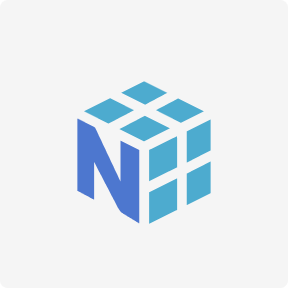It implemented a system that integrated its thousands of applications, standardized processes, and restructured warehouse management systems—breaking down silos for seamless, integrated coordination of work. Businesses employ enterprise resource planning (ERP) for various reasons, such as expanding, reducing costs, and improving operations. The benefits sought and realized between companies may differ; however, some are worth noting. High-level programmers will use enterprise architecture when referring to the hardware and software components in a design. For a website, that might comprise a web server, database, the NoSQL database cache, the API endpoints and the content delivery network. Programming managers are responsible for maintaining legacy systems in traditional languages while developing systems in newer languages.

By bringing together and centralizing customer data, enterprises can deliver a personalized service experience that meets customer demands. Enterprise application software performs business functions such as order processing, procurement, production definition of enterprise system scheduling, customer information management, energy management, and accounting. Increasingly, deploying AI and IoT technologies in operations has resulted in continual optimization of both the assets and activities that drive the industrial sector.
Customer Relationship Management (CRM)
For example, programmers and other technical IT professionals regard enterprise architecture strategies in terms of the infrastructure, application and management components under their control. However, enterprise architects are still responsible for enacting business structure analysis. An enterprise system framework permits organizations to coordinate business procedures, for example, sales, deliveries and accounts receivable, by sharing data crosswise over business capacities and employee hierarchy systems.
Microsoft (MSFT) has long been an industry leader, with many customers using multiple software applications from the company. You can think of an enterprise resource planning system as the glue that binds together the different computer systems for a large organization. Without an ERP application, each department would have its system optimized for its specific tasks. With ERP software, each department still has its system, but all of the systems can be accessed through one application with one interface.
What Is Enterprise Software?
An ERP system is driven by the ERP software suite-a set of integrated software modules–and a common centralized database. The software modules support the basic business processes under different functional areas and the database stores data from and feed the data to various applications supporting the internal business activities. Generally, packages include finance, human resource, logistics and manufacturing, supply chain management, and customer relationship management.
By collecting an organization’s shared transactional data from multiple sources, ERP systems eliminate data duplication and provide data integrity with a single source of truth. The CRM module makes it possible for businesses to manage client operations, such as marketing, sales, and customer service. Users can also employ CRM in marketing operation management, including advertisements and lead generation campaigns. Earlier, in large organizations, different information systems were used to serve different business functions like sales, marketing, production, manufacturing, etc., separately. Some businesses benefit from enhanced real-time data reporting from a single source system. Accurate and complete reporting help companies adequately plan, budget, forecast, and communicate the state of operations to the organization and interested parties, such as shareholders.
ERP Weaknesses
The company might need to rethink how it’s organized or risk ending up with incompatible technology. Also, menial and manual tasks are eliminated, allowing employees to allocate their time to more meaningful work. ERP applications also allow the different departments to communicate and share information more easily with the rest of the company.
- IBM is helping companies across industries apply predictive maintenance to improve business performance.
- From a hardware point of view, enterprise systems are the servers, storage and related programming software that large organizations use as the establishment for their IT infrastructure.
- The key is to prevent ERP projects from being split into smaller projects, which can result in cost overruns.
- Enterprise applications are designed to integrate computer systems that run all phases of an enterprise’s operations to facilitate cooperation and coordination of work across the enterprise.
- Enterprise systems are built on software platforms, such as SAP’s NetWeaver and Oracle’s Fusion, and databases.
- First, there is an ever-increasing demand for storage due to the Internet, document management and data warehousing as well as increasing daily transaction volume in growing companies.
First, there is an ever-increasing demand for storage due to the Internet, document management and data warehousing as well as increasing daily transaction volume in growing companies. Secondly, finding the time window in a 7×24 operation to copy huge databases for backup, archiving and disaster recovery has become more difficult. Database administrators must select the DBMS or DBMSs that efficiently process the daily transactions and also provide sufficient horsepower for decision support.
enterprise architecture (EA)
IBM Maximo® improves scheduling, vendor management and both workflow and financial reporting — all without paper. Usage-based preventive maintenance is triggered by the actual utilization of an asset. This type of maintenance takes into account the average daily usage or exposure to environmental conditions of an asset and uses it to forecast a due date for a future inspection or maintenance task. Today, ERP systems are critical for managing thousands of businesses of all sizes and in all industries. To these companies, ERP is as indispensable as the electricity that keeps the lights on. In such cases, the software may need to be customized to satisfy the requirements of the organizations.

However, moving to an ERP system will be counterproductive if the company’s culture does not adjust to the change and the company does not review how the structure of its organization can support it. These are attributes that must exist for software to work and are unlikely to fit in a specification document. Quality elements are not functional requirements, but are ways to determine acceptable operating conditions and necessary tradeoffs to get there. Like all software, a database management system (DBMS) must support the hardware platform and operating system it runs in. In order to move a DBMS to another platform, a version must be available for the new hardware and operating system.
reasons to move to an ERP cloud solution
Notable features include inventory, purchasing, shipping, tracking, refunds, claim processing, and supplier scheduling. ERP systems usually fail to achieve the objectives that influenced their installation because of a company’s reluctance to abandon old working processes. Some companies may also be reluctant to let go of old software that worked well in the past.
Technologies and tools such as process automation, project management software, artificial intelligence (AI), data analytics, and machine learning (ML) make collaboration between teams easier and deliver actionable insights. Each type of enterprise application can be considered a “system” due to the integration with a firm’s business processes.[6] Categories of enterprise software may overlap due to this systemic interpretation. For example, IBM’s Business Intelligence platform (Cognos), integrates with a predictive analytics platform (SPSS) and can obtain records from its database packages (Infosphere, DB2).
The importance of enterprise architecture
Their antiquated inventory tracking system did not account for changing costs, and the accounting software could not record the metrics needed for key financial statements. These breakdowns created manual processes, which further compromised time and resources. Oracle Corp. (ORCL) originally supplied a relational database that integrated with ERP software developed by SAP (SAP) before entering the broader enterprise market in a big way in the early 2000s.

